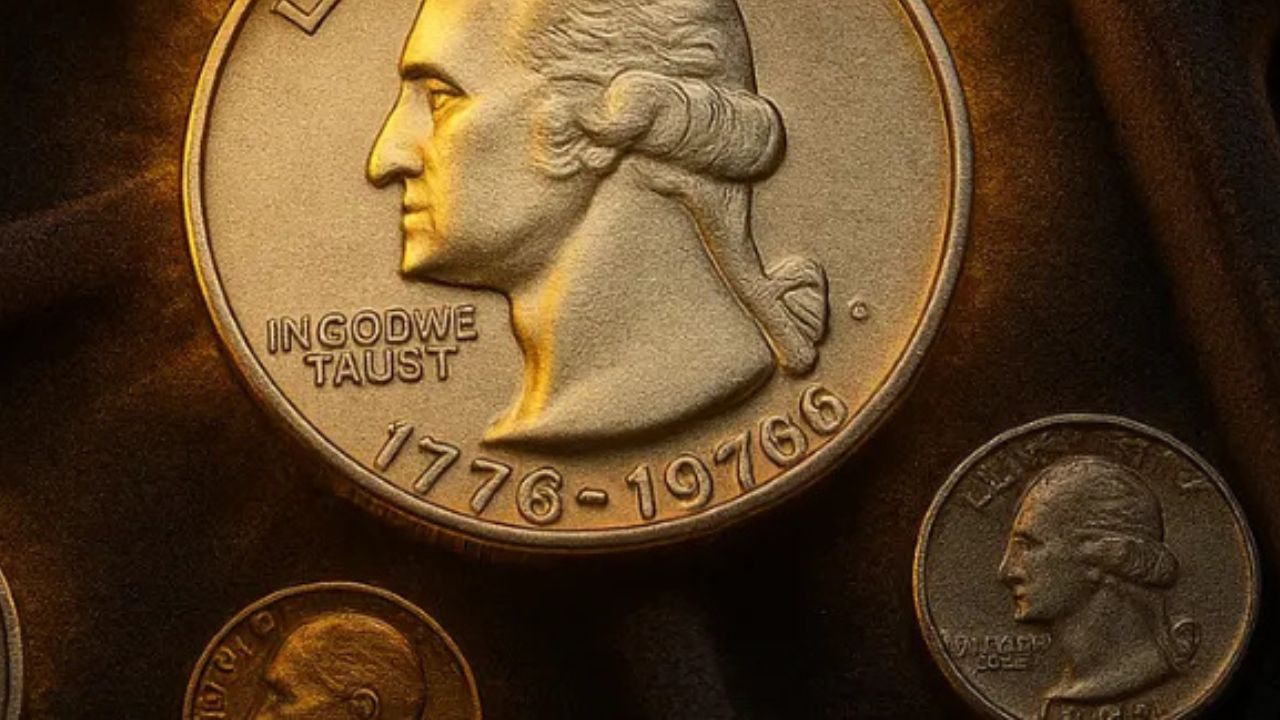Did you know that some coins from the 1970s are now worth thousands of dollars? Among them, the 1976 Bicentennial Quarter stands out—not just for its unique design, but also for its surprising value. One of these special coins recently sold for nearly $20,000, and others aren’t far behind.
If you’ve got old change lying around, it’s time to take a closer look. That quarter you’ve overlooked for years could be a hidden gem.
Why Bicentennial Quarters Are So Special
In honor of America’s 200th birthday in 1976, the U.S. Mint issued a redesigned quarter unlike any other. These bicentennial quarters featured a bold reverse design showcasing a Colonial drummer and a torch encircled by 13 stars—symbolizing the original colonies.
Unlike typical coins, these were minted in both 1975 and 1976 and are easily recognized by their dual date: “1776–1976.” The redesign was the first significant update to the quarter in more than 50 years, making it a favorite among collectors and history enthusiasts alike.
What Makes a Bicentennial Quarter Valuable?
While millions of bicentennial quarters were made, not all are created equal. Value depends on factors like:
- Condition (Grade): Coins in near-perfect or uncirculated condition can fetch premium prices.
- Mint Location: Quarters minted in San Francisco (with an “S” mark) are more limited.
- Metal Composition: Some coins were struck in 40% silver instead of the typical copper-nickel clad.
- Rarity and Errors: Unique minting mistakes or double strikes can make a coin extremely rare.
Mint Locations and Mintage Numbers
Three U.S. Mint facilities produced bicentennial quarters, but not all coins are equal in number:
- Philadelphia (no mint mark): 809,784,016 coins
- Denver (D mint mark): 860,118,839 coins
- San Francisco (S mint mark):
- 11 million silver uncirculated coins
- 7,059,099 clad proof coins
- 4 million silver proof coins
Collectors prize San Francisco coins, especially those in silver or proof condition, due to their lower mintage.
Top Bicentennial Quarters That Sold for Thousands
Here are 7 bicentennial quarters that have made waves in recent auctions, selling for over $1,000 each:
1. 1976-S Silver Proof Bicentennial Quarter – $13,500
Sold in 2019, this brilliant proof coin from the silver series showcased top-tier preservation and luster, driving up its value.
2. 1976 Double Denomination Error – $9,200
Sold in 2020, this extraordinary error occurred when a quarter design was mistakenly struck on a dime blank—making it one-of-a-kind.
3. 1976-D Clad Doubled Die Obverse – $8,400
This 2023 sale featured a quarter with a doubled design on the front—a classic error that serious collectors seek out.
4. 1976-D Clad Quarter in Gem Condition – $6,463
A standard minting with exceptional surface quality and sharp detail led to a surprising price tag at auction in 2017.
5. 1976-S Clad Proof Quarter – $6,038
This mirror-finish proof coin, sold in 2010, stood out due to its flawless details and deep contrast.
6. 1976-S Silver Deep Cameo Proof – $2,760
Sold in 2007, this silver coin featured a frosted image with a reflective background, commonly called a “deep cameo.”
7. 1976 Clad Quarter in Near-Perfect Condition – $1,821
Although clad quarters are common, this one sold in 2023 due to its nearly unblemished, mint state appearance.
Could a Rare Quarter Be in Your Pocket?
Absolutely. Bicentennial quarters were heavily circulated, and many still turn up in pocket change or tucked away in coin jars. While most are only worth face value, those with silver content, rare minting errors, or pristine condition can be worth thousands.
How to Check If Your Quarter Is Valuable
- Look for the “S” Mint Mark: San Francisco coins are typically proof or silver versions.
- Check the Coin’s Finish: Proof coins have a shiny background and frosted images.
- Inspect for Errors: Doubled lettering or wrong planchets can add massive value.
- Get It Graded: Use services like PCGS or NGC to professionally grade and authenticate your coin.
Final Thoughts: Don’t Overlook Your Change
Bicentennial quarters are more than just a nostalgic keepsake—they’re potentially valuable collector’s items. With coins selling for as much as $19,200, taking a second look at that old quarter might just pay off.
Whether you’re a casual coin holder or a dedicated numismatist, these coins offer a unique blend of history and hidden wealth. The next time you receive change, don’t forget to check for the iconic drummer and the date “1776–1976”—it might be worth far more than 25 cents.
Frequently Asked Questions (FAQs)
What makes a bicentennial quarter valuable?
Factors include minting errors, 40% silver content, proof quality, and condition grade.
Are all bicentennial quarters made of silver?
No. Most are copper-nickel clad, but San Francisco released special 40% silver versions in proof and uncirculated sets.
How can I tell if my quarter is rare?
Look for mint marks (“S” is rare), signs of proof quality, and any unusual errors. A professional appraisal can confirm rarity and value.
Can I still find valuable bicentennial quarters in circulation?
Yes. Though rare, valuable versions still turn up in pocket change or coin collections.
Where can I sell a valuable bicentennial quarter?
Try trusted auction houses, coin dealers, or online platforms like eBay—but always verify the coin’s authenticity first.
